Power monitoring at PIL Membranes
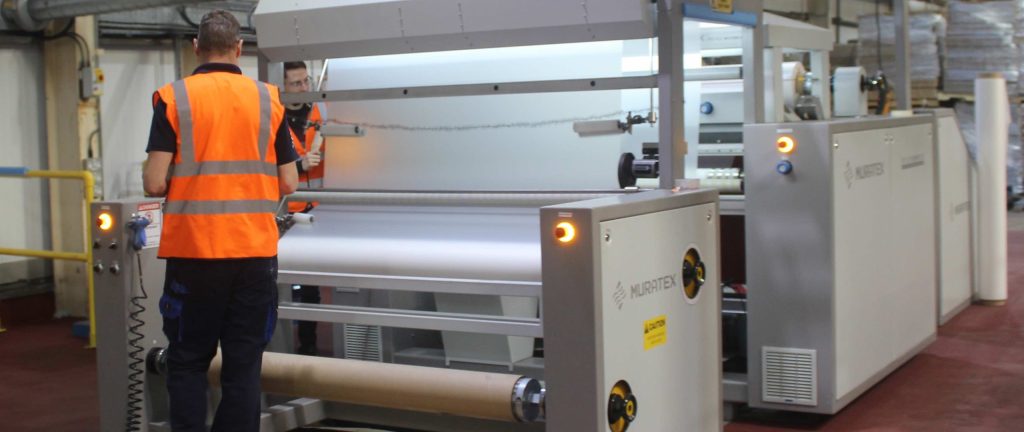
Shoestring paved the way for a greater understanding of how the solutions work, providing us with confidence to troubleshoot issues on our own.”
Harry Goldsmith, Support Technician, PIL Membranes
With energy costs rising PIL Membranes were keen to start monitoring and optimising the power consumption of their machinery using low-cost technology.
PIL Membranes has developed polymer and membrane systems that are used by manufacturers worldwide who produce protective and comfortable apparel, from waterproof coats to fire resistant gloves.
Key members of the Shoestring Community, employees at PIL Membranes helped Shoestring develop its first starter solution. Helping to take the beta version of the power monitoring solution to its first release, the Production Manager and Support Technician joined a cohort of companies to test, develop and deploy Shoestring’s basic power monitoring starter solution. Having seen first hand the potential of the system, PIL has already started exploring more solutions, including one which will enable them to monitor more powerful machinery.
Business challenge:
Monitor the energy consumption of machinery to optimise power usage.
Solution:
Power monitoring solution, using open source software and hardware which cost £135, which was initially installed on an exhaust fan on the production line.
Outcomes:
- Showed that power consumption on the fan was stable
- Provided a proof of concept for more digital solutions
- Provided greater understanding of the limitations of their network infrastructure
- Opened communications between different departments; gave staff confidence to share ideas of where we can save energy in the future.
Next steps:
Installation of an intermediate power monitoring solution.
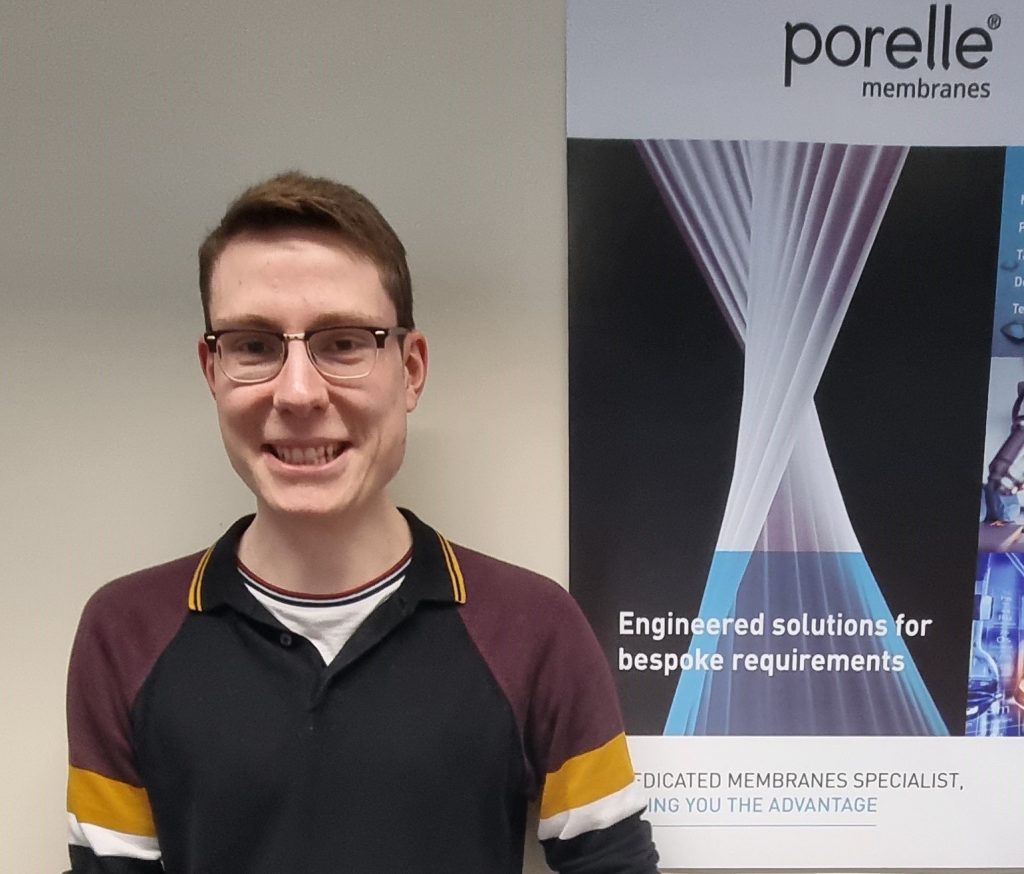
Harry Goldsmith, Support Technician at PIL Membranes, shares his learning journey
Harry joined PIL Membranes a year and a half ago straight from university and has played a key role in building and deploying Shoestring’s low-cost solutions on the shop floor. Answering some questions about the Shoestring process, Harry explains below the development process they went through with Shoestring, highlighting how the power monitoring starter solution helped the company.
What was the challenge that PIL Membranes wanted to address?
The amount of energy used across our site has become an increasingly important concern within PIL membranes in terms of the environmental impact and the cost of most of production being 24/7. The focus is to monitor the energy consumption of machinery to help optimise power usage. To carry out this monitoring we needed a cost-effective power monitoring solution which is easy to use, logs energy data on a frequent basis and can be accessed quickly.
What was the solution?
We went with the starter power monitoring solution using a Raspberry Pi 4 B (2GB) using the Gravity ADC module with a 20A CT clamp. The cost of these parts totalled up to just over £135 at the time we started the project.
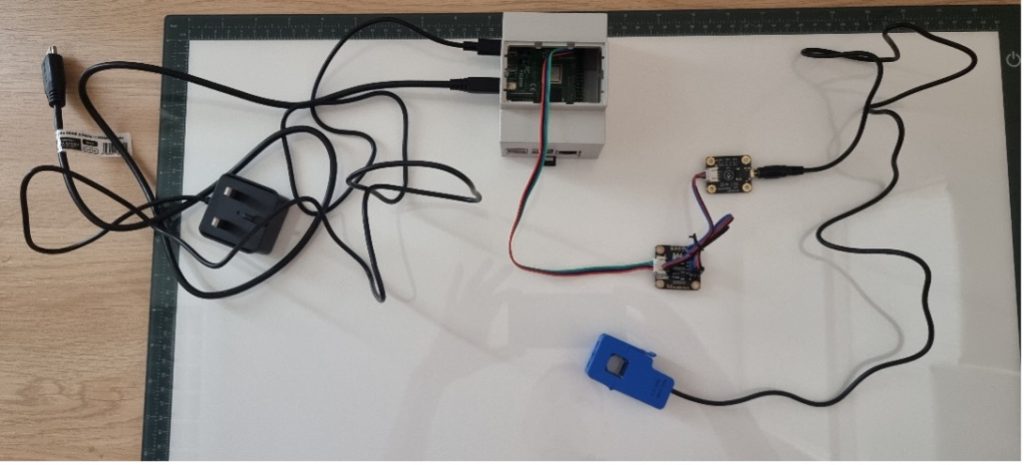
- Raspberry Pi 4 Model B Starter Kit (2G): £79.50
- Italtronic Case for Embedded Raspberry Pi 4 Din Rail Enclosure, Grey: £15.61
- Gravity: I2C ADS1115 16-Bit ADC Module: £19.90
- AC Current sensor (SEN0211) with 20A CT Clamp: £20.95
Working in a cohort has been a fantastic way of learning about Shoestring solutions.”
Harry Goldsmith, Support Technician, PIL Membranes
Where was solution installed?
The solution was installed on an exhaust fan on a production line. This was in an area with consistent enough Wi-Fi and with available electrical outlets to enable installation.
How long did it take to build and install?
The solution was built from scratch to a point where it was ready to be installed on a piece of machinery on two separate occasions. We started by working in a small test group to evaluate the first draft of the instructions. This was the first time we had worked using a Raspberry Pi, and we had little personal knowledge of our own internal network infrastructure. The setup of the beta version took place over 4 sessions of around 3 hours each across the span of 3 weeks. The time was spent understanding how a Raspberry Pi worked and working directly with Shoestring to help develop the instructions. The time was also spent understanding how we can allow the Raspberry Pi through our internal network to set a static IP to access the solution remotely.
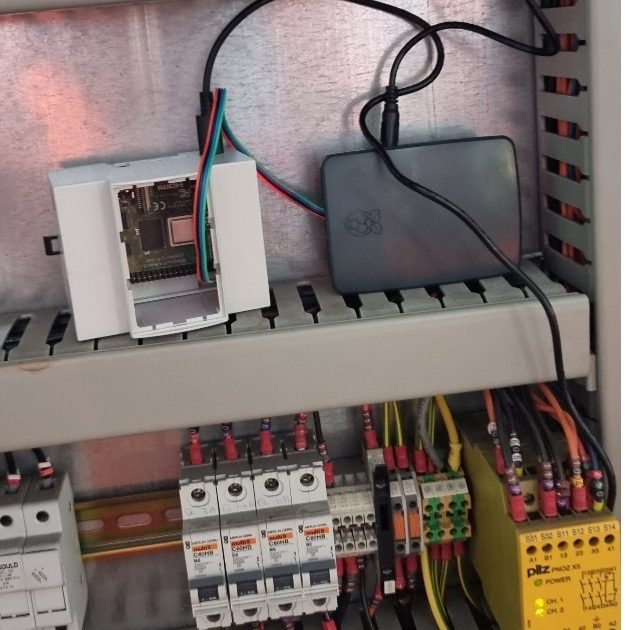
The solution was installed a few weeks later, on an exhaust fan but no data was being gathered. This was solved quickly once we got in contact with Shoestring where the problem was solved. Our internal network had its own NTP, and the RPi had not been directed to look at it; the solution worked well from that point onwards.
The second time the solution was built was a few months after the initial install. This was with a revised version of the instructions and the knowledge we gained from the first install. The setup time for this was under 45 minutes.
These solutions have opened communications between different departments… giving people the confidence to share ideas of where we can save energy in the future.”
Harry Goldsmith, Support Technician, PIL Membranes
What tangible outcomes were seen?
The data gathered from the exhaust fan showed that the power consumption was very stable with a variability of less than 0.1kWh. This data itself did not provide any improvement to the energy consumption but it did work as great proof of concept for the Shoestring solution.
What intangible outcomes were seen?
This solution has helped us gain a better understanding of how to use a Raspberry Pi to help ease the implementation of new solutions across site. The beta version of the power monitoring solution took a lot longer than expected but it paved the way for a greater understanding of how the solutions work and providing confidence to troubleshoot issues on our own before contacting Shoestring. This has also provided a greater understanding of the limitations of our network infrastructure of where we can and cannot gain network access as well as the measures needed to be taken to allow the solutions through the firewall.
These solutions have opened communications between different departments – engineering and IT – to decide where and how the next solutions can be set up. This has shown that there is a high level of interest in this project, and it has given people the confidence to share ideas of where we can save energy in the future.
What are the next steps?
We are currently working on deploying an intermediate power monitoring solution which uses a multi-function meter to monitor machines which use much more power (the image below shows it set up in the office). The aim of this is to visualize voltage, amps, and power factor of a machine in real time and historically to be able to make informed decisions on which piece of equipment should have priority when it comes to maintenance.
This solution is currently functional but is yet to be installed on a piece of equipment in the factory.
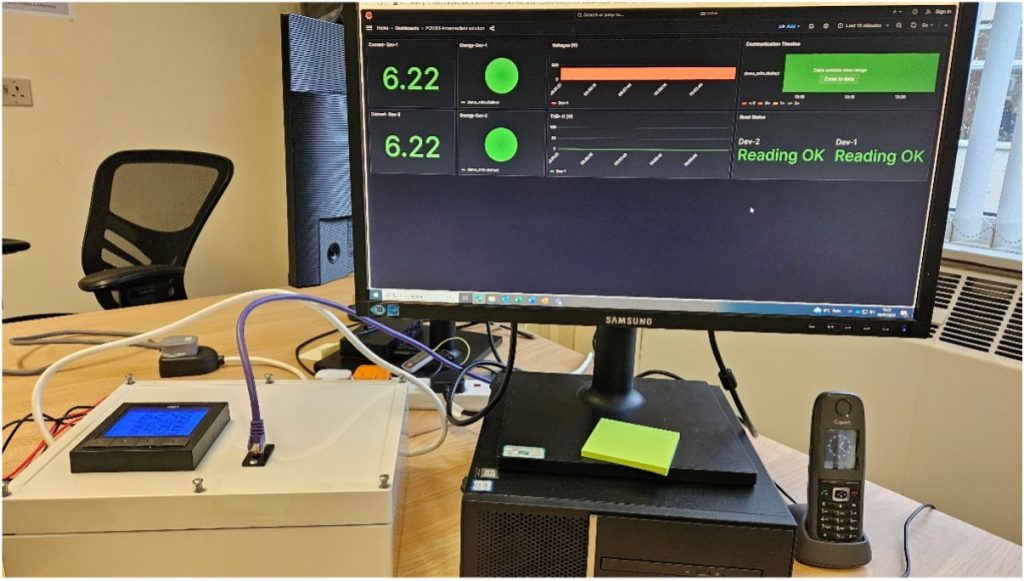
What was the training process like – learning in a cohort?
Working in a cohort has been a fantastic way of learning about Shoestring solutions. We had regularly scheduled meetings with 2 other companies who were working on the starter power monitoring solution but using different hardware. This allowed us to discuss as a group how we were finding the solution and to share feedback amongst each other. We were able to bounce ideas off each other very easily and help one another if someone encountered any issues. The Shoestring team were very responsive to any contact we made and were able to issue concise support even when we didn’t fully understand the problem ourselves.
Power monitoring starter solution
Get started with your own hands on training programme and learn how to install a low-cost power monitoring solution to help understand power usage in your factory.
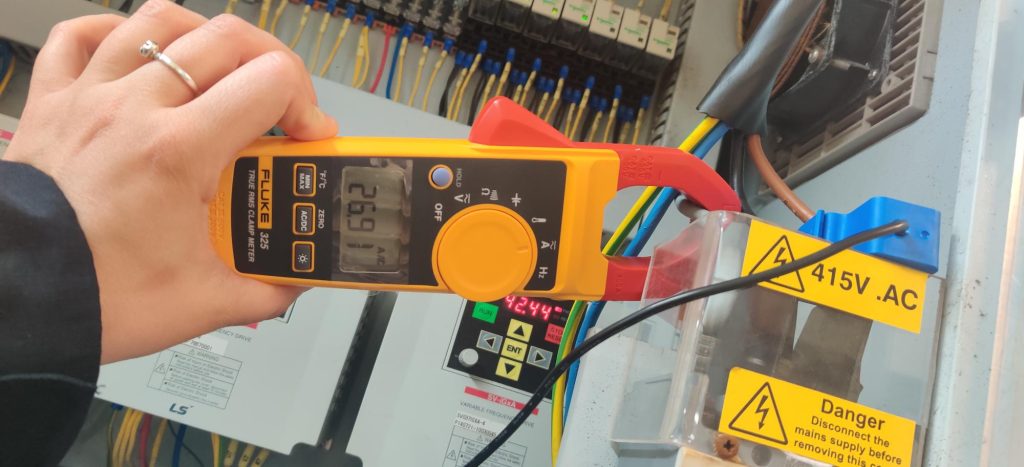
Any Questions?
Shoestring’s inventive approach helps small and medium sized manufacturers take the first steps to digitalisation by using off-the-shelf technology to create practical low-cost, low risk digital solutions.
Find out how Shoestring could help your company embrace digitalisation
CONTACT US